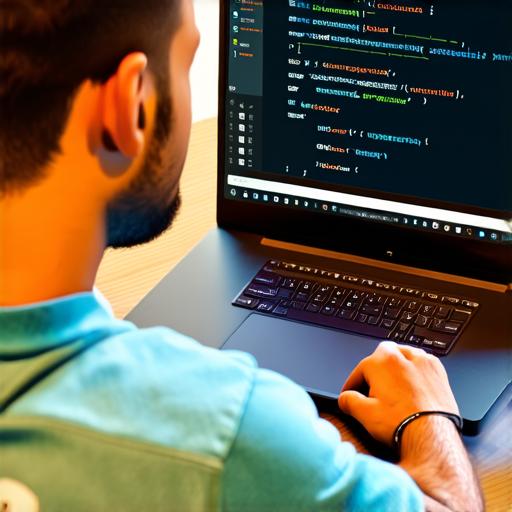As a mobile application developer using Android Studio, you know how important it is to create visually appealing and engaging user interfaces. One of the key components of any good UI design is high-quality images that can help convey your app’s message and enhance the overall user experience. In this article, we will walk you through the process of inserting an image into your Android Studio project, step by step. We will also discuss some best practices for working with images in Android development, including tips for optimizing image sizes and reducing load times.
Getting Started: Understanding the Basics
Before we dive into the process of inserting an image in Android Studio, it’s important to understand the basics of how images work in Android development. Images are typically stored as files on the device or in an external storage location, and can be loaded into your app using various methods.
There are two main types of images used in Android development: bitmap and vector images. Bitmap images are typically stored as JPEG or PNG files and are composed of pixels. They are best suited for small, detailed images that need to be rendered at a specific size, such as logos or icons. Vector images, on the other hand, are scalable and can be resized without losing quality. They are typically used for larger images, such as backgrounds or illustrations.
To insert an image into your Android Studio project, you will need to follow these general steps:
- Create a new folder in your project’s res/drawable-hdpi folder (or the appropriate folder for your target device) and name it something descriptive, such as “image_name”.
- Open the image file in an image editing software and save it in the appropriate format for Android development (JPEG or PNG). Make sure to optimize the image size to reduce load times and improve performance.
- In your Android Studio project, right-click on the folder where you want to insert the image and select “Add” > “Image Asset”.
- In the “New Image Asset” dialog box that appears, enter a name for the image and select the appropriate image format (JPEG or PNG). You can also choose to set dimensions and density for the image.
- Click “Finish” to add the image to your project.
Inserting Images in Your Code
Once you have added the image to your project, you will need to insert it into your code so that it can be displayed in your app. There are several ways to do this, depending on the type of widget you are using.
For example, if you are using an ImageView widget, you can set the image as the source by accessing its “setImageResource” method and passing in the ID of the image asset you just created. Here’s an example:
scss
ImageView myImage findViewById(R.id.my_image);
myImage.setImageResource(R.drawable.image_name);
If you are using a Bitmap widget, you can set the image as the source by passing in the bitmap object directly. Here’s an example:
java
Bitmap myBitmap BitmapFactory.decodeFile(“path/to/my/image.jpg”);
ImageView myImage findViewById(R.id.my_image);
myImage.setImageBitmap(myBitmap);
Best Practices for Working with Images in Android Development
Now that you know how to insert an image into your Android Studio project, let’s take a look at some best practices for working with images in Android development.
Optimizing Image Sizes
One of the most important things to consider when working with images in Android development is optimizing their size to reduce load times and improve performance. Large images can slow down your app and cause issues with memory usage, so it’s important to keep them as small as possible without sacrificing quality.
There are several ways to optimize image sizes in Android development:
- Use the appropriate file format: JPEG is typically used for photos and other detailed images, while PNG is best suited for graphics and illustrations. Both formats can be compressed to reduce size, but JPEGs tend to be smaller overall.
- Reduce image dimensions: The larger the image, the more data it takes up. By reducing the dimensions of your images (without sacrificing quality), you can significantly reduce their file size.
- Use density-independent pixels (dp): Android devices come in a variety of sizes and resolutions, so it’s important to use dp instead of pixel values when setting image dimensions. This will ensure that your images scale correctly on any device.
- Use image compression tools: There are several tools available that can help you compress your images without sacrificing quality. Some popular options include TinyPNG and Kraken.io.

Working with Multiple Images
If your app needs to display multiple images, there are several ways to do this in Android development:
- Use a RecyclerView or ListView: These widgets allow you to easily display lists of items, including images. You can create custom adapter classes that inflate views for each item and set the image as the source using the appropriate method.
- Use an Image Gallery library: There are several libraries available that make it easy to create image galleries in Android apps. Some popular options include Picasso and Glide. These libraries handle many of the details of loading and displaying images, making it easier for you to focus on other parts of your app.
Summary
In this article, we have walked you through the process of inserting an image into your Android Studio project, as well as some best practices for working with images in Android development. By following these tips and tricks, you can create visually appealing and engaging user interfaces that help enhance the overall user experience of your app. Remember to optimize image sizes, use density-independent pixels, and consider using a RecyclerView or ListView or an Image Gallery library when displaying multiple images in your app.
